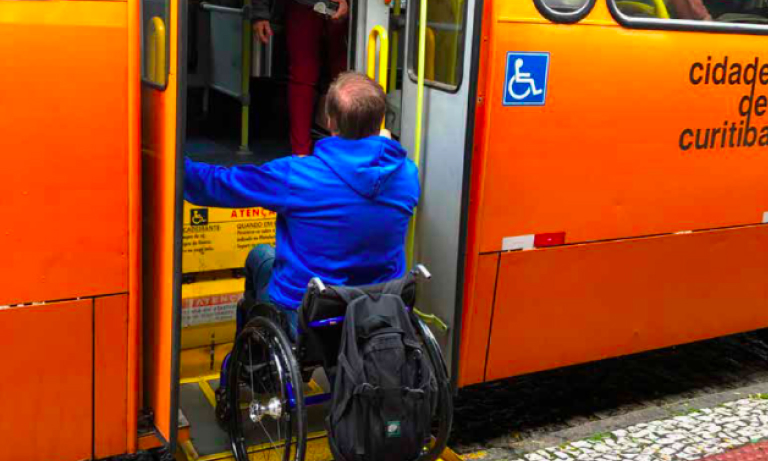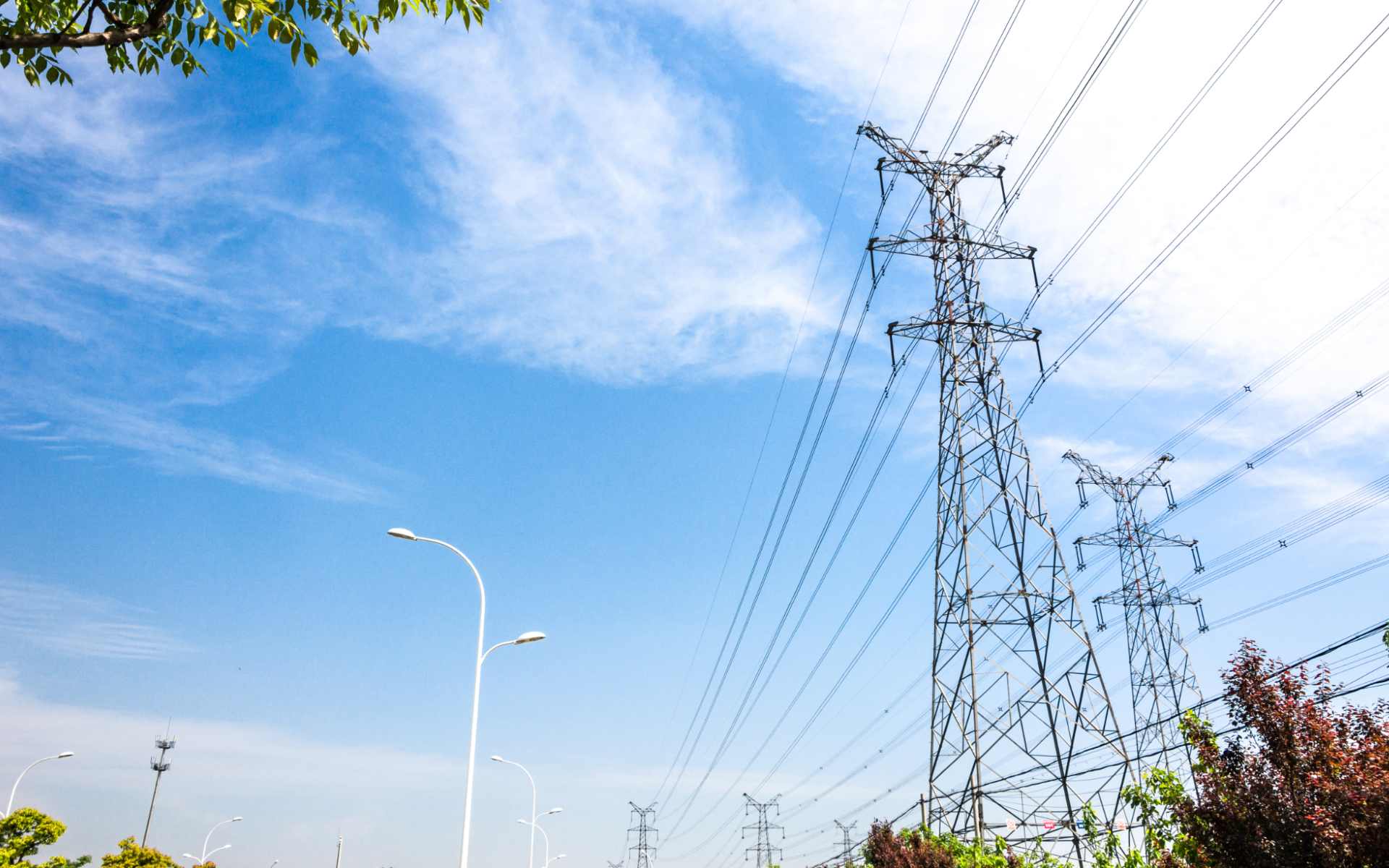The Future of Infrastructure Finance in a Post-COVID-19 World – Modern Diplomacy

Report on Post-Pandemic Infrastructure Finance and the Sustainable Development Goals
Executive Summary
The COVID-19 pandemic has exposed critical vulnerabilities in global infrastructure, necessitating a fundamental shift in financing strategies to align with the 2030 Agenda for Sustainable Development. This report analyzes the evolving landscape of infrastructure finance, emphasizing the imperative to integrate Sustainable Development Goals (SDGs) into investment priorities. The post-pandemic recovery presents an opportunity to rebuild infrastructure that is not only economically productive but also resilient, inclusive, and sustainable. Achieving this requires innovative financing models that blend public and private capital, prioritize green and digital solutions, and empower local actors, directly contributing to the attainment of key SDGs, including SDG 9 (Industry, Innovation and Infrastructure), SDG 11 (Sustainable Cities and Communities), and SDG 13 (Climate Action).
The Post-Pandemic Imperative: Aligning Infrastructure with the 2030 Agenda
Broadening the Scope of Infrastructure for SDG Attainment
The traditional definition of infrastructure, focused on physical assets, is no longer sufficient. The pandemic has underscored the need for a holistic approach that incorporates digital, social, and environmental dimensions to support comprehensive sustainable development. This expanded mandate is critical for progress across multiple SDGs.
- Digital Systems (SDG 9, SDG 4): The shift to remote work, education, and telehealth highlights the role of digital connectivity as essential infrastructure for ensuring quality education and fostering innovation.
- Climate-Resilient Structures (SDG 11, SDG 13): Increasing climate-related events demand that all new infrastructure projects are designed for resilience, contributing to sustainable cities and climate action.
- Social Infrastructure (SDG 3, SDG 10): Investments in public health systems and services that promote equity are now recognized as foundational infrastructure for reducing inequalities and ensuring well-being.
Fiscal Constraints and the Challenge to SDG 9
A primary challenge in the post-COVID era is the diminished fiscal capacity of governments worldwide. Soaring public debt and reduced revenues threaten the public investment needed to close the infrastructure gap, directly jeopardizing the achievement of SDG 9 (Industry, Innovation and Infrastructure). This fiscal reality necessitates a more strategic use of public funds, shifting the focus from sole funding to catalyzing private investment and de-risking projects to make them bankable and aligned with development goals.
Strategic Financing Models for Sustainable and Resilient Infrastructure
Mobilizing Capital through Blended Finance (SDG 17)
Blended finance, which combines public or philanthropic capital with private investment, is a crucial mechanism for achieving SDG 17 (Partnerships for the Goals). This model leverages public funds to mitigate risks and attract private sector capital into development-focused infrastructure projects, particularly in emerging markets. For blended finance to be effective, several conditions must be met:
- Strong Governance and Transparency: Clear regulatory frameworks and transparent procurement processes are essential to build investor confidence and ensure public value.
- A Pipeline of Viable Projects: Governments and development partners must invest in project preparation to create a portfolio of well-structured, bankable infrastructure deals.
- Institutional Capacity: Building the expertise within public institutions to manage complex public-private partnerships (PPPs) is critical for successful implementation and risk management.
Investing in Green Infrastructure for Climate Action (SDG 7, SDG 13)
The global recovery effort provides a unique opportunity to accelerate the transition to a low-carbon economy. Investing in green infrastructure is no longer a niche category but a core component of sustainable development, essential for meeting the targets of SDG 13 (Climate Action) and SDG 7 (Affordable and Clean Energy). Key trends include:
- Growth of Green Finance: Instruments like green bonds and climate funds are mobilizing capital specifically for projects with positive environmental outcomes.
- Alignment with ESG Principles: Investors are increasingly applying Environmental, Social, and Governance (ESG) criteria to capital allocation, favoring infrastructure projects that demonstrate strong sustainability performance.
- Focus on Climate-Smart Projects: Investment is shifting towards renewable energy, low-carbon transport, energy-efficient buildings, and climate adaptation infrastructure.
Bridging the Digital Divide for Inclusive Development (SDG 4, SDG 9, SDG 10)
The pandemic highlighted digital inequality as a major barrier to inclusive development. Closing the digital divide is a top priority for achieving SDG 10 (Reduced Inequalities), SDG 4 (Quality Education), and SDG 9. Financing digital infrastructure, including broadband networks, data centers, and 5G technology, requires policies that foster a competitive private sector-led market, streamlined regulation, and innovative PPP models tailored to the fast-paced nature of the technology sector.
Localizing Infrastructure Development for Sustainable Communities
Empowering Subnational Actors for SDG 11
Cities and local governments are on the front lines of infrastructure delivery and are central to achieving SDG 11 (Sustainable Cities and Communities). However, many subnational authorities lack the financial resources and technical capacity to develop and fund projects. Strengthening local financing capabilities is therefore essential. Innovative mechanisms include:
- Municipal Finance Instruments: Developing markets for municipal bonds and creating pooled finance facilities to help cities raise capital independently.
- Credit Enhancement Tools: Using guarantees and other instruments from national governments or MDBs to improve the creditworthiness of cities.
- Capacity Building: Providing technical assistance to local governments for project planning, financial management, and governance to ensure investments are effective and sustainable.
Navigating Risks to Ensure Long-Term SDG Impact
Addressing Headwinds in Infrastructure Finance
The path to financing sustainable infrastructure is subject to significant risks that could undermine progress toward the SDGs. Policymakers and investors must proactively manage these challenges to ensure the long-term viability and impact of projects.
- Macroeconomic Volatility: Rising interest rates, inflation, and geopolitical tensions can increase project costs and deter private investment.
- Governance and Execution Risks: A rush to build can lead to inadequate planning, weak environmental and social safeguards, and corruption, compromising project quality and sustainability.
- Technological Obsolescence: Rapid innovation, especially in the digital sector, creates a risk that new infrastructure may become outdated, requiring adaptive and flexible financing and regulatory models.
Conclusion: A Collaborative Path Towards Resilient and Inclusive Infrastructure
Financing the next generation of infrastructure requires a collaborative and strategic approach centered on the Sustainable Development Goals. The future of infrastructure finance will be defined not by the volume of spending, but by the wisdom of investments. By blending public and private capital, prioritizing green and digital solutions, and strengthening governance at all levels, the global community can build the resilient, inclusive, and sustainable infrastructure needed to withstand future shocks and achieve the 2030 Agenda. This requires a concerted effort under the framework of SDG 17 (Partnerships for the Goals), uniting governments, multilateral institutions, and the private sector in a shared mission to invest in a better, more sustainable future for all.
Analysis of SDGs, Targets, and Indicators
1. Which SDGs are addressed or connected to the issues highlighted in the article?
- SDG 9: Industry, Innovation and Infrastructure: This is the central theme of the article. It directly discusses the need to invest in “physical and digital infrastructure,” including “roads, bridges, ports, energy grids, and water systems,” as well as “digital connectivity” and “climate-resilient structures.” The entire article revolves around financing these infrastructure needs.
- SDG 17: Partnerships for the Goals: The article heavily emphasizes the need for new financing models to achieve infrastructure goals. It details the importance of “blended finance,” which “combines public and private resources,” and highlights the role of “Development finance institutions (DFIs), multilateral development banks (MDBs),” and “public-private partnerships (PPPs)” in mobilizing capital.
- SDG 13: Climate Action: The article repeatedly links infrastructure to climate change, calling for “climate-smart infrastructure” to be the norm. It discusses financing mechanisms like “green bonds, climate funds, and carbon markets” and mentions the “Green Climate Fund (GCF)” as a key player in funding “adaptation and mitigation infrastructure.”
- SDG 11: Sustainable Cities and Communities: The text addresses the challenges of “rapid urbanization” and highlights the “growing importance of cities and local governments” in infrastructure provision. It mentions specific urban needs like “urban transport, sanitation, and housing” and advocates for financing mechanisms like “municipal bonds.”
- SDG 7: Affordable and Clean Energy: This goal is addressed in the context of green infrastructure. The article mentions investments in “energy grids” and specifically in “clean energy” and “low-carbon transport,” which are financed through tools like “green bonds.”
- SDG 10: Reduced Inequalities: The article connects infrastructure to social equity. It states that infrastructure should “foster inclusion and equity” and points out that poor digital connectivity “exacerbated inequality and left millions behind.” Closing the “digital divide” is presented as a key priority to reduce these disparities.
- SDG 16: Peace, Justice and Strong Institutions: The article underscores that successful infrastructure finance requires institutional strength. It calls for “strong governance, transparent procurement,” and avoiding “corruption.” It also highlights the need for “stronger governance at the local level” to manage decentralized financing.
- SDG 8: Decent Work and Economic Growth: The article frames infrastructure as the foundation to “enable economic activity.” It also discusses the economic challenges that hinder investment, such as “shrinking fiscal space,” “rising debt burdens,” and “inflationary pressures,” which are all relevant to sustainable economic growth.
2. What specific targets under those SDGs can be identified based on the article’s content?
-
Under SDG 9 (Industry, Innovation and Infrastructure):
- Target 9.1: “Develop quality, reliable, sustainable and resilient infrastructure… to support economic development and human well-being, with a focus on affordable and equitable access for all.” The article’s entire premise is about financing this type of infrastructure, from “roads, bridges, ports” to “digital systems” and “climate-resilient structures.”
- Target 9.a: “Facilitate sustainable and resilient infrastructure development in developing countries through enhanced financial, technological and technical support…” The text explicitly focuses on the financing challenges in “developing and emerging economies” and the role of MDBs and DFIs in providing support.
- Target 9.c: “Significantly increase access to information and communications technology and strive to provide universal and affordable access to the Internet…” This is directly addressed in the section “The Digital Infrastructure Imperative,” which calls for closing the “digital divide” through investments in “broadband expansion, data centers, [and] 5G networks.”
-
Under SDG 17 (Partnerships for the Goals):
- Target 17.3: “Mobilize additional financial resources for developing countries from multiple sources.” The article is a detailed discussion of this target, exploring how to “blend multiple funding sources,” “leverage private capital,” and use public funds to “attract private investors.”
- Target 17.17: “Encourage and promote effective public, public-private and civil society partnerships…” The text champions “blended finance” and “public-private partnerships (PPPs)” as essential models for future infrastructure finance.
-
Under SDG 11 (Sustainable Cities and Communities):
- Target 11.3: “Enhance inclusive and sustainable urbanization and capacity for participatory, integrated and sustainable human settlement planning and management…” The article supports this by advocating for “participatory budgeting, inclusive planning, and citizen oversight” at the local level to ensure infrastructure meets community needs.
- Target 11.a: “Support positive economic, social and environmental links between urban, peri-urban and rural areas…” The focus on “subnational and local financing” and empowering cities to build infrastructure like “urban transport” directly supports stronger regional development planning.
-
Under SDG 13 (Climate Action):
- Target 13.a: “Implement the commitment undertaken by developed-country parties… to a goal of mobilizing jointly $100 billion annually… to address the needs of developing countries… and transparently operationalize the Green Climate Fund…” The article directly mentions the “Green Climate Fund (GCF)” as a source of concessional resources for climate infrastructure.
-
Under SDG 16 (Peace, Justice and Strong Institutions):
- Target 16.6: “Develop effective, accountable and transparent institutions at all levels.” The article stresses that for blended finance to succeed, it requires “strong governance, transparent procurement,” and institutional capacity to manage complex financial arrangements.
3. Are there any indicators mentioned or implied in the article that can be used to measure progress towards the identified targets?
-
Financial Flow Indicators:
- The article points to the volume of “green bond issuance” as a key metric, noting it “reached all-time highs” in 2021-2022. This can measure progress in financing climate-smart infrastructure.
- The amount of capital mobilized through “blended finance” arrangements and “public-private partnerships (PPPs)” is an implied indicator of success in leveraging private investment for development.
- The level of “global public debt” is mentioned as a critical indicator of the “shrinking fiscal space” that governments face, which affects their ability to invest.
- The amount of concessional resources provided by “climate funds such as the Green Climate Fund (GCF) and Global Environment Facility (GEF)” is a direct indicator of financial support for climate action in developing countries.
-
Infrastructure Access and Quality Indicators:
- The “digital divide” is a key concept, implying that progress can be measured by the percentage of the population with access to digital services, particularly in “rural and low-income areas.” This relates to measuring access to broadband, 5G, and digital public services.
- The article implies measuring the “backlog of physical and digital infrastructure needs” as a baseline against which new investments can be tracked.
-
Governance and Policy Indicators:
- The presence of “transparent procurement” processes is mentioned as a requirement for successful projects, suggesting that the adoption of such policies is a measurable indicator of institutional strength.
- The alignment of investments with “environmental, social, and governance (ESG) principles” is presented as a growing norm. The proportion of infrastructure projects that meet ESG criteria could be a key indicator of sustainability.
- The existence of a “pipeline of viable, well-prepared projects” is cited as a prerequisite for attracting investment, implying that the number and value of such projects is a measure of a country’s readiness.
4. Table of SDGs, Targets, and Indicators
| SDGs | Targets | Indicators Identified in the Article |
|---|---|---|
| SDG 9: Industry, Innovation and Infrastructure |
9.1: Develop quality, reliable, sustainable and resilient infrastructure.
9.c: Increase access to ICT and provide universal and affordable internet access. |
– Reduction in the “backlog of physical and digital infrastructure needs.” – Extent of the “digital divide” (proportion of population with/without connectivity, especially in rural and low-income areas). – Level of investment in “broadband expansion, data centers, 5G networks.” |
| SDG 17: Partnerships for the Goals |
17.3: Mobilize additional financial resources for developing countries from multiple sources.
17.17: Encourage effective public, public-private and civil society partnerships. |
– Volume of capital mobilized through “blended finance.” – Number and value of “public-private partnerships (PPPs).” – Amount of private capital attracted through public de-risking strategies. |
| SDG 13: Climate Action | 13.a: Implement the commitment to mobilize climate finance and operationalize the Green Climate Fund. |
– Volume of “green bond issuance.” – Amount of funding provided by “climate funds such as the Green Climate Fund (GCF) and Global Environment Facility (GEF).” – Proportion of infrastructure investments aligned with ESG criteria. |
| SDG 11: Sustainable Cities and Communities | 11.3: Enhance inclusive and sustainable urbanization and capacity for participatory planning. |
– Level of capital raised through “municipal bonds” and “pooled finance facilities.” – Implementation of “participatory budgeting” and “inclusive planning” at the local level. |
| SDG 16: Peace, Justice and Strong Institutions | 16.6: Develop effective, accountable and transparent institutions at all levels. |
– Existence of “strong governance” and “transparent procurement” processes. – Institutional capacity to manage complex financial arrangements (e.g., PPPs). – Measures to prevent “corruption” in infrastructure projects. |
| SDG 8: Decent Work and Economic Growth | (Implied) Maintain sustainable economic growth and manage debt. |
– Level of “global public debt” as a percentage of GDP. – “Shrinking fiscal space” (government revenue vs. spending). |
Source: moderndiplomacy.eu

What is Your Reaction?
 Like
0
Like
0
 Dislike
0
Dislike
0
 Love
0
Love
0
 Funny
0
Funny
0
 Angry
0
Angry
0
 Sad
0
Sad
0
 Wow
0
Wow
0




































![Lancaster homeowner’s energy-efficient renovation sparks clash over historic preservation [Lancaster Watchdog] – LancasterOnline](https://bloximages.newyork1.vip.townnews.com/lancasteronline.com/content/tncms/assets/v3/editorial/9/ed/9ed03d32-c902-44d2-a461-78ad888eec38/69050b156baeb.image.png?resize=150,75#)

































_21.jpg?#)









